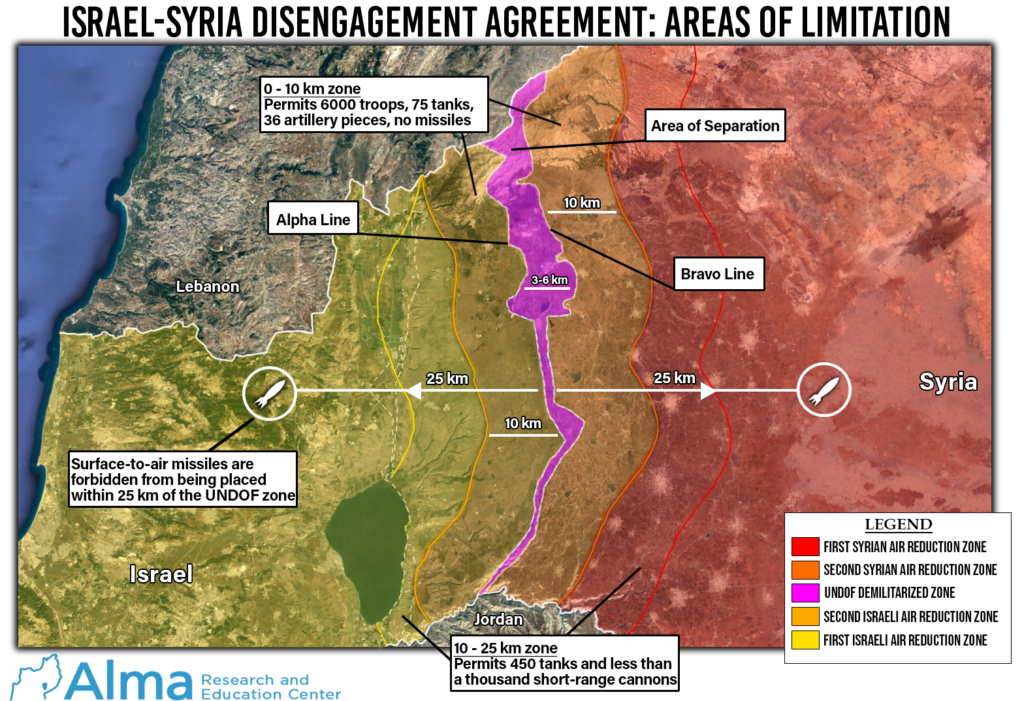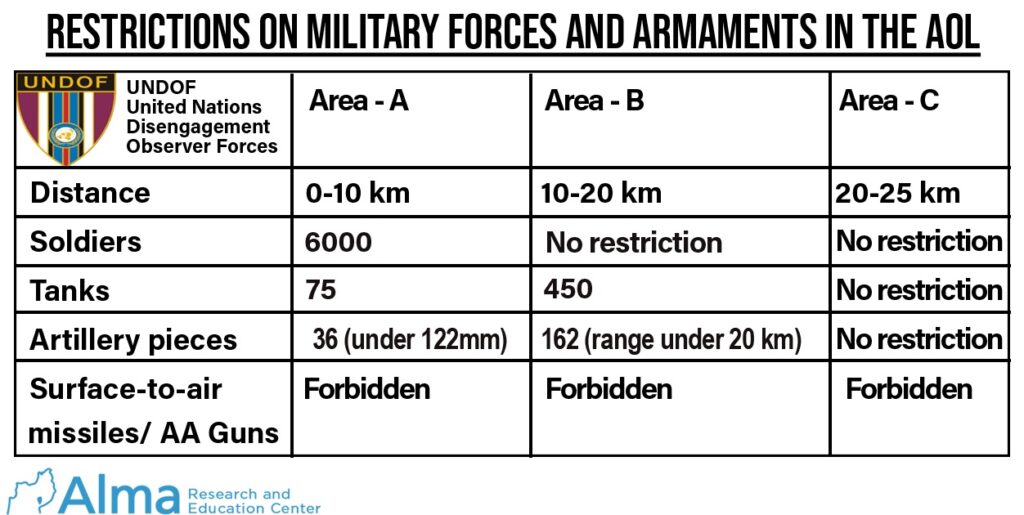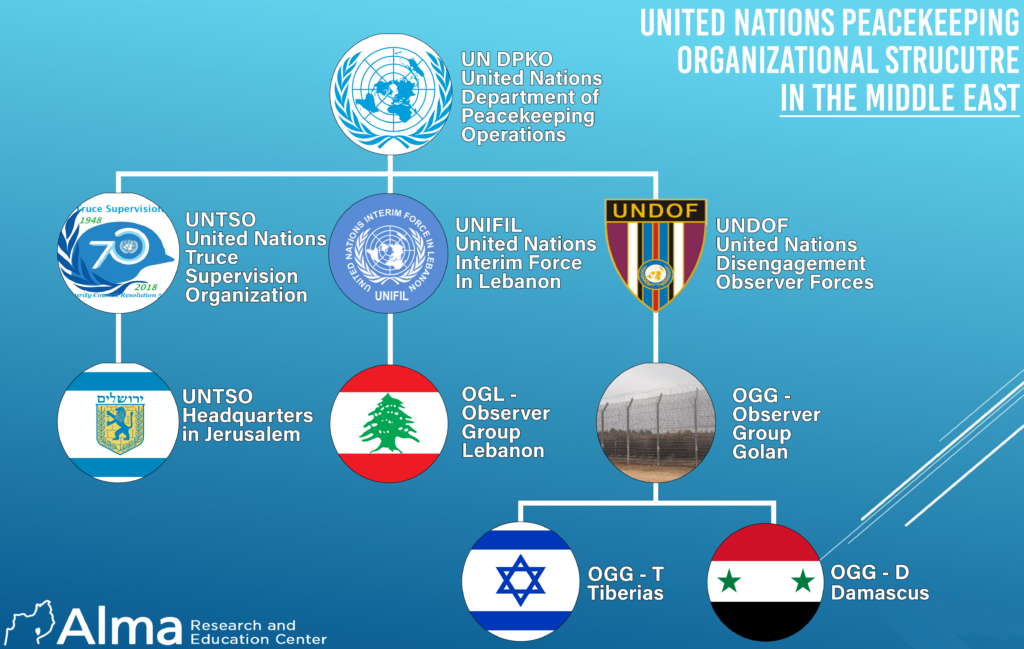UNTSO is a United Nations Truce Supervision Organization responsible for overseeing the ceasefire between Israel and Syria. Its mandate derives from Security Council Resolution 50,[1] adopted on May 29, 1948, which was agreed upon by Israel and the surrounding countries. The organization’s role is to oversee the ceasefires and the armistice agreements and prevent isolated incidents that could escalate. In addition, the force advises the other UN peacekeeping forces in our region – UNDOF in Syria and UNIFIL in Lebanon. The force consists of representatives from 25 different donor countries, 152 observers, and 244 civilian employees, of which 91 are international citizens.
With the establishment of the State of Israel, the force began to carry out its missions overlooking all its surrounding borders. Following the regional stabilization, i.e., the signing of the peace treaty with Jordan in 1994 and Egypt in 1979, the force lost its relevance at these borders, leaving its main mission on the Syrian and Lebanese borders. As mentioned above, groups of UNTSO military observers are attached to the peacekeeping forces in the region: UNIFIL in Lebanon and UNDOF in Syria. UNTSO headquarters are in Jerusalem, with a liaison office in Jordan and a liaison office in Cairo, Egypt (UNTSO has a larger budget than UNDOF, but is ten times smaller…).

After the Yom Kippur War, on May 31, 1974, the “Separation of Forces Agreement between Israel and Syria” was signed. This territorial agreement between the countries defines the ceasefire lines and the accompanying military arrangements. This agreement included Israel’s withdrawal of its forces from the peak of Mount Hermon (today’s “Syrian Hermon”) and other areas around Quneitra. Two separation lines were established, with the Israeli line A marked in blue and the Syrian line B marked in red (now known as the “barrel line” – the “alpha line”), including a buffer zone specified on the Syrian side.[2]
The buffer zone was designated as a demilitarized zone[3] under the supervision of a new peacekeeping force established in the wake of UN Security Council Resolution 350 – UNDOF, an armed force overseeing the separation agreement. The force’s mandate is to conduct audits per the agreement and report their results to the parties at fixed times and no less than once every 15 days or when requested by one of the parties. According to the separation agreement, within the “Area of limitation” (AOL), there is a limit on the number of soldiers, tanks, artillery, and anti-aircraft launchers and missiles in the AOL (west and east of the buffer zone).

As stated, the professional force that carries out the task of supervision and observation of the number of forces on both sides of the buffer zone is the long-serving force – UNTSO. Technically, these inspections are conducted through sectoral mounted patrols in firing zones, outposts, and IDF bases in the AOL. The Golan Heights sector on the Israeli side is divided into 7 sub-sectors, with observers from OGG-T[4] and IDF liaison officers in the Golan Heights branch of the UN Liaison Headquarters of the Northern Command. In addition to these inspections, there is also an audit of Self-propelled artillery weapons (also called locomotive artillery), which deals with the number of IDF’s non-self-propelled artillery vehicles. This audit aims to ensure that the number of self-propelled artillery weapons in the 20-kilometer strip does not deviate from the separation agreement and that the amount of ammunition does not exceed the agreed capacity. Today, this audit is held once every 4 months. These inspections do not apply only to the Israeli Golan Heights but also to the Syrian Golan Heights, but this is where the matter gets complicated…
The inspections in the Golan Heights have been carried out since the mid-1970s, ignoring any technological developments in the region, regional changes, and various security developments. When exploring where that force was during the Syrian civil war that began more than ten years ago, we find that since the Assad regime recently retook the Syrian Golan Heights from the opposition forces, no patrols have been carried out in these areas.
When the Syrian Golan Heights was in the hands of the opposition forces, there were no limitation inspections in the areas occupied by the opposition forces. The UN banned patrols and decided to withdraw UNDOF force from areas controlled by the opposition forces, mainly because of the capture of these areas by the al-Nusra Front (global jihad), which abducted about 45 Fijian UN inspectors and surrounded UN Filipino soldiers outposts.

However, most of the northern part of the Syrian Golan Heights, i.e., from Madinat al-Ba’ath (New Quneitra) and the north, was never occupied by the opposition forces and was controlled by the Assad regime. Were the limiting inspections carried out then? Did they persist week after week in carrying out these inspections? The answer is no; moreover, no clear answers were received to questions referred to the UN by the Israeli Foreign Ministry regarding the failure to conduct inspections in Syria under the agreement, even after the regime regained control of the occupied territories from the hands of the opposition forces. The Syrians have claimed over the years that it is still dangerous, and they cannot guarantee the safety of the UN soldiers.
Limitation inspections have always been a provocation in Israeli eyes, with the observer forces constant reports of repeated violations due to the presence of the Iron Dome in the Golan Heights. The presence of the Iron Dome array in the Golan Heights is there for a sound reason. The array is situated there in order to abort any attacks employed by terrorist elements operating under the radical Shiite axis led by Iran, which is located near the border using Syrian army infrastructures. The threat of using drones and UAVs by Hezbollah’s Golan File unit has increased significantly, besides the expected use of rockets and mortars.
For example, even the Shia Axis rocket fire in June 2019 on the Israeli Mount Hermon, thwarted by the ‘Iron Dome’ array, did not lead to an understanding that it is time to update the UN force’s mandate, its goals, and tasks. Even though shrapnel from the event fell on UN bases on the Hermon, the IDF received monthly reports of its violations due to the ‘Iron Dome’ in the Golan Heights. The absurdity – the same violation that the observers reported, is what saved their base from being damaged. Where is UNTSO supposed to supervise the Hezbollah units and the Syrian army on the border front that violate the agreements every day?
The same as in Lebanon, also in Syria, the UN forces have a clear mandate and mission, but they are not enforcing them.
[1] http://unscr.com/en/resolutions/50
[2] https://web.archive.org/web/20070220024249/http://www.yadlabanim.co.il/moreshet_pic/page54.html
[3] AOS – Aria of Separation
[4] UNTSO’s liaison office is located in the city of Tiberias in Israel and operates in coordination with the IDF liaison branch in the Golan Heights, located in the Ha-Bashan Division (210th Division) in Nafah.





